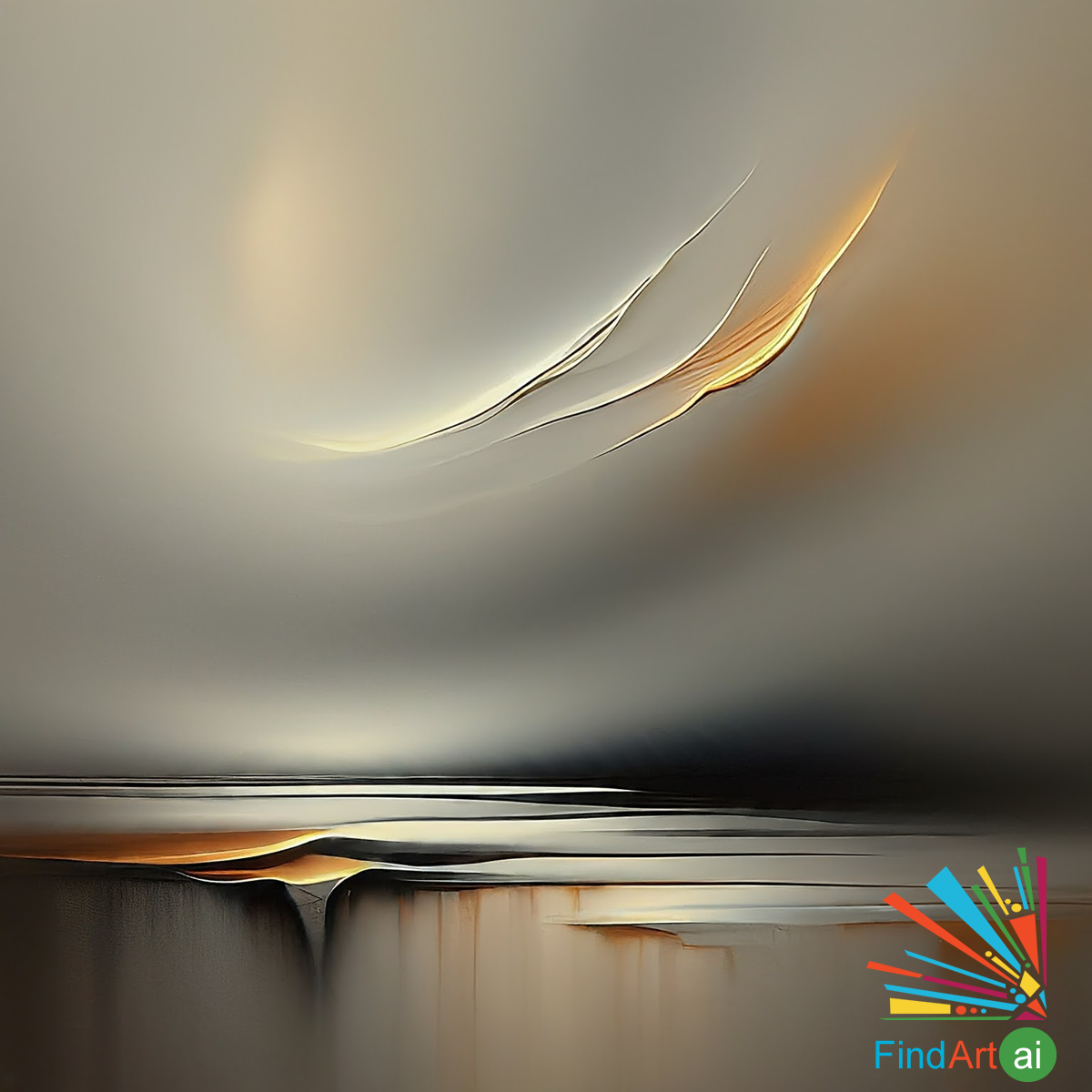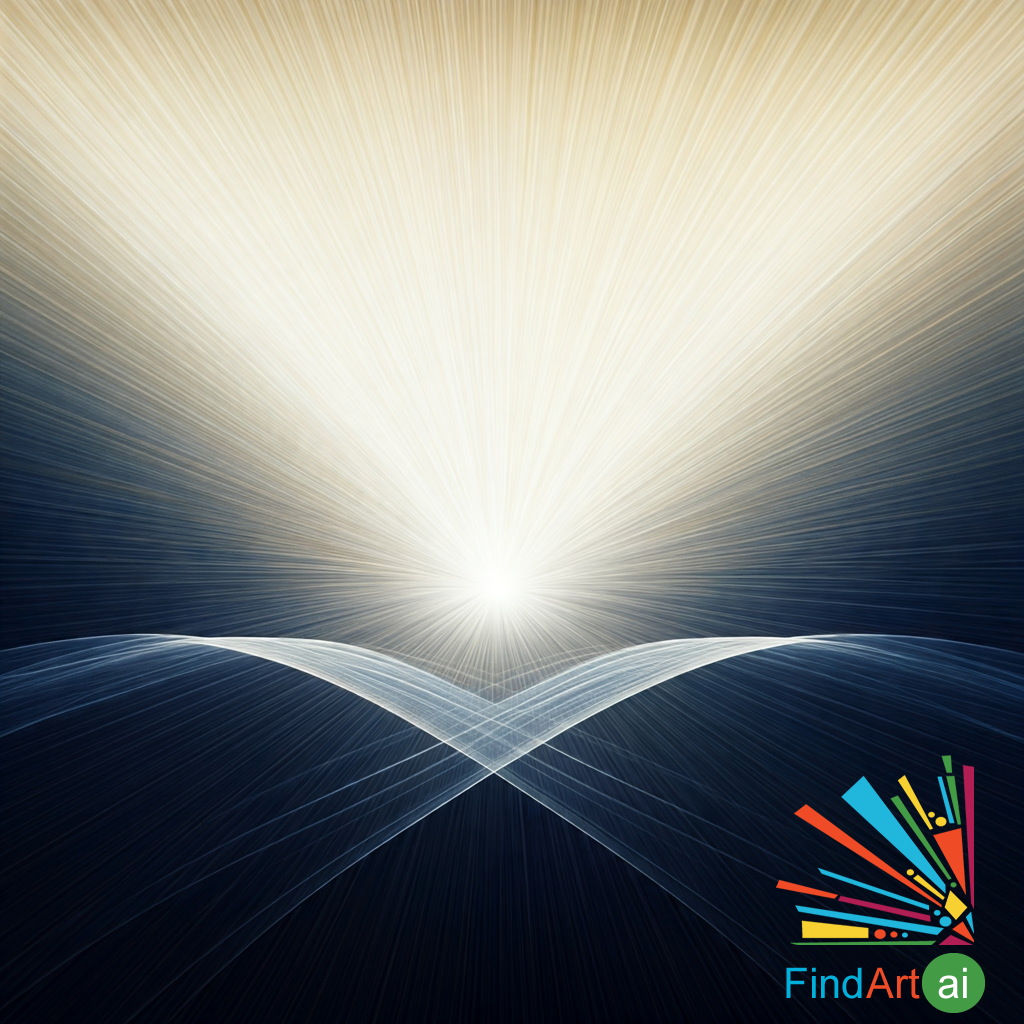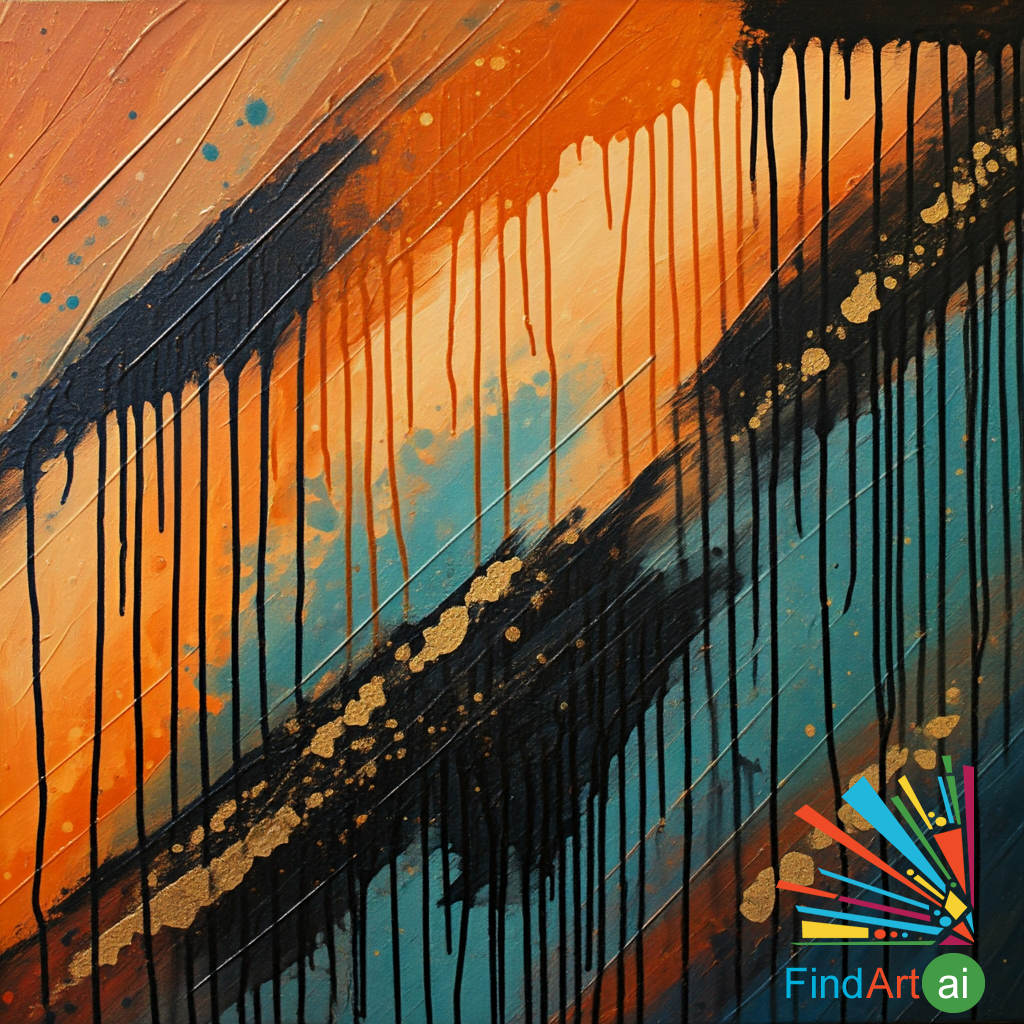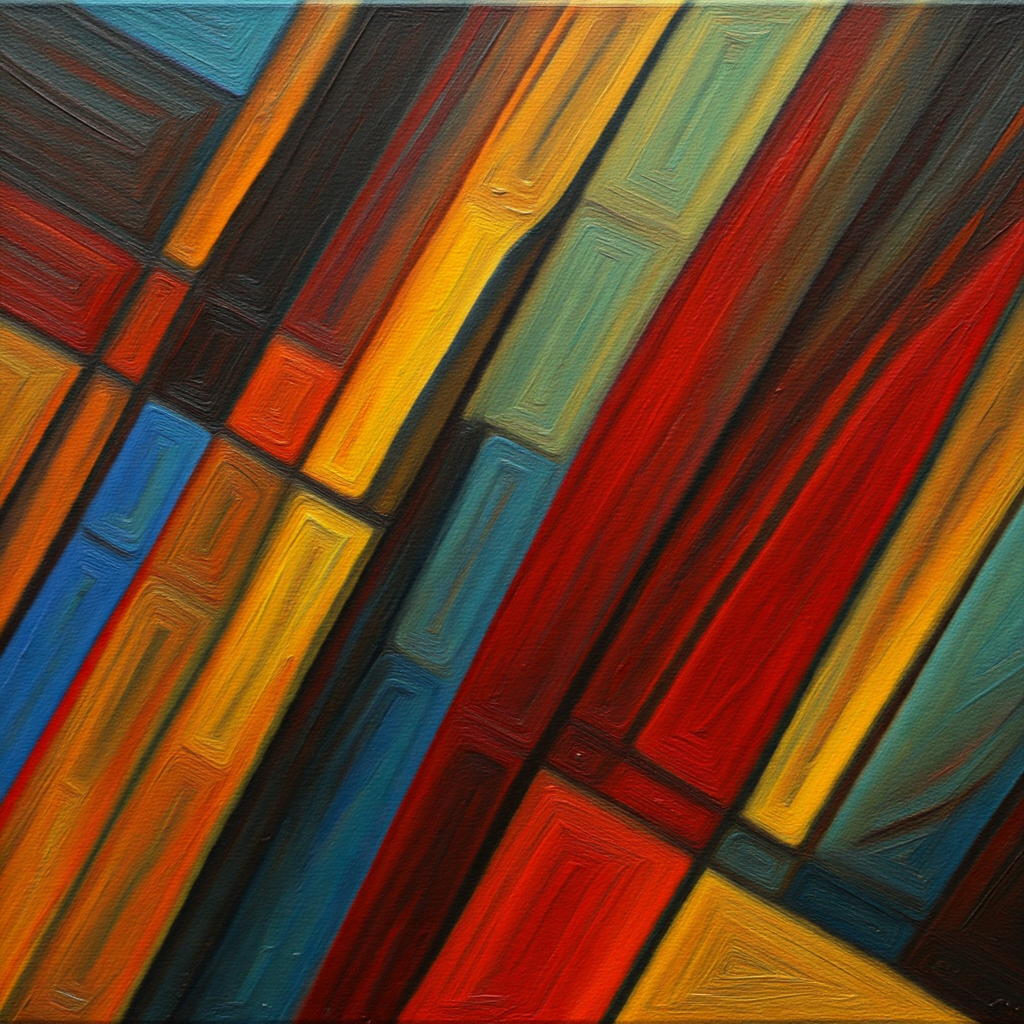Abstract Art
Abstract art is a painting style that breaks away from the depiction of recognizable objects and focuses on shapes, colors, forms, and textures. Rather than trying to represent reality as it appears, abstract artists use visual elements to express emotions, ideas, and the essence of a subject. This movement, which began in the early 20th century, allows for greater experimentation and personal expression, often challenging traditional boundaries of art.
Key Characteristics of Abstract Art
- Non-Representational Forms:
- Abstract art does not depict recognizable objects, people, or scenes from the natural world. Instead, it uses shapes, lines, and colors that may not directly resemble anything from reality, leaving interpretation open to the viewer.
- Example: Wassily Kandinsky’s Composition VIII, where shapes and colors are arranged in a dynamic, non-representational composition intended to evoke emotion and thought.
- Focus on Color and Form:
- In abstract painting, color and form take precedence over subject matter. Artists use bold, vibrant, or subtle color palettes and dynamic or geometric shapes to convey mood, movement, and emotion, rather than portraying physical objects.
- Example: Mark Rothko’s color field paintings, such as Orange and Yellow, use large blocks of color to create emotional resonance without the need for recognizable imagery.
- Expression of Emotion and Ideas:
- Abstract art is often deeply emotional or conceptual, as it seeks to express the artist’s inner feelings, thoughts, or ideas rather than depict a physical scene. The meaning behind abstract art can be highly subjective, and different viewers may interpret it in various ways.
- Example: Jackson Pollock’s drip paintings, like No. 5, 1948, are chaotic and expressive, with layers of paint splattered and dripped onto the canvas, representing raw emotion and the subconscious.
- Geometric and Organic Abstraction:
- Some abstract art focuses on geometric shapes and patterns, while others use more organic, free-form shapes. Geometric abstraction often emphasizes order and structure, while organic abstraction focuses on fluid, natural forms.
- Example: Piet Mondrian’s Composition with Red, Blue, and Yellow uses clean, geometric lines and primary colors to explore the harmony and balance between form and color.
- Simplification and Reduction:
- Abstract artists often simplify forms, stripping away details to focus on the essential elements of a subject. This reduction can result in highly stylized or minimal compositions that emphasize basic shapes, lines, or colors.
- Example: Kazimir Malevich’s Black Square, a simple black square on a white background, represents a radical departure from traditional painting, focusing on pure geometric abstraction and rejecting representation.
- Use of Texture and Materials:
- Abstract art often incorporates various textures and materials, adding depth and interest to the composition. Artists may layer paint, use unconventional materials, or create textured surfaces to engage viewers in a tactile as well as visual experience.
- Example: Jean Dubuffet’s Hourloupe series, where textured, rough surfaces are created through bold, overlapping lines and colors, evoking a sense of physicality and spontaneity.
- Freedom of Interpretation:
- One of the defining aspects of abstract art is the freedom it gives both the artist and the viewer. Because it doesn't aim to depict specific objects or scenes, viewers are encouraged to find their own meanings and emotional responses to the work.
- Example: Helen Frankenthaler’s Mountains and Sea, which, while inspired by nature, uses diluted paint to create an abstract landscape open to interpretation.
Common Themes in Abstract Art
- Emotion and Subjectivity: Abstract art often seeks to convey emotions or subjective experiences rather than represent physical reality.
- Spirituality and the Sublime: Some abstract artists, like Kandinsky, explored the spiritual or transcendental through their art, using abstraction as a way to connect with higher realms of consciousness.
- Exploration of Form and Color: Abstract art delves into the relationship between form, color, and composition, experimenting with how these elements interact to evoke different feelings or concepts.
- Freedom and Experimentation: The abstract art movement allowed artists to break away from the constraints of traditional representation and experiment with new techniques, mediums, and ideas.
Famous Abstract Artists and Works
- Wassily Kandinsky:
- A pioneer of abstract art, Kandinsky believed that art should express inner emotions and spirituality. His works, such as Composition VIII, use dynamic shapes and colors to evoke a sense of harmony and movement.
- Piet Mondrian:
- Mondrian is known for his use of geometric abstraction, where he simplified forms into vertical and horizontal lines and primary colors. His Composition with Red, Blue, and Yellow is an iconic example of this approach.
- Jackson Pollock:
- Famous for his drip painting technique, Pollock’s abstract expressionist works, like No. 5, 1948, are chaotic and energetic, created through the spontaneous application of paint to canvas.
- Mark Rothko:
- Rothko’s color field paintings, such as Orange and Yellow, focus on the emotional impact of large, soft-edged blocks of color. His works are meditative and invite viewers to experience deep emotional responses.
- Kazimir Malevich:
- A leading figure in the Suprematist movement, Malevich’s Black Square is a landmark in abstract art, reducing form to its most basic geometric elements and focusing on pure abstraction.
Abstract art painting style rejects the direct representation of the physical world, focusing instead on shapes, colors, and forms to convey emotions, ideas, and the artist's subjective experience. It allows for freedom of interpretation, enabling viewers to engage with the work on a personal level. Through bold experimentation and a departure from traditional artistic conventions, abstract art has reshaped the boundaries of what art can express, exploring the deeper emotional and conceptual dimensions of human experience.
Abstract Art Paintings with Emotion and Subjectivity Theme
Abstract art with an Emotion and Subjectivity theme is a powerful means of expressing the complexiti...
Abstract Art Paintings with the Spirituality and the Sublime Theme
Abstract art paintings with the Spirituality and the Sublime theme transcend the physical world, exp...
Abstract Art with Freedom and Experimentation Theme
Abstract art paintings with the Freedom and Experimentation theme celebrate the act of artistic expl...
Abstract Art Paintings with Exploration of Form and Color Theme
Abstract art paintings with the Exploration of Form and Color theme celebrate the independence of vi...




